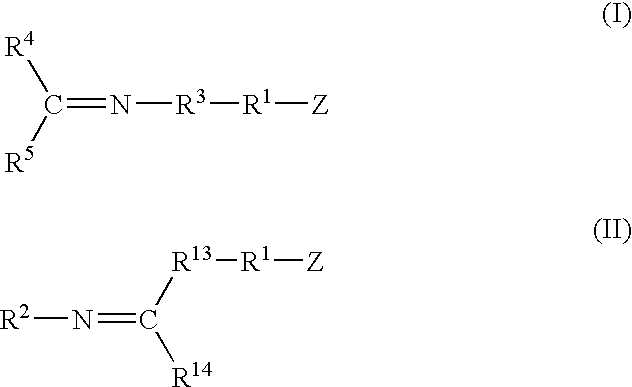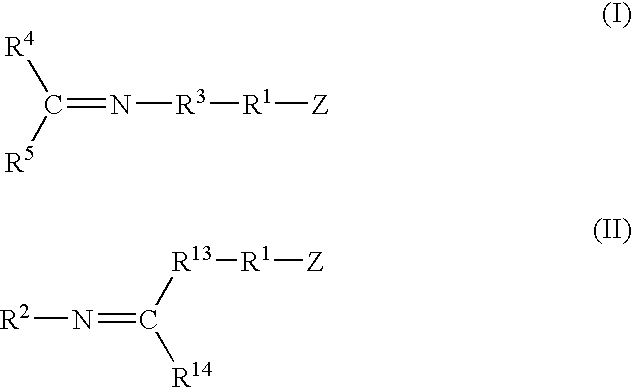Modified polymers prepared with lanthanide-based catalysts
a technology of lanthanide and catalyst, which is applied in the field of functionalized polymers, can solve the problems of difficult to obtain the reaction conditions required to achieve functionalization, low 1,4-cis polymers, and limited ability of coordination catalysis to functionalize the resulting polymers
- Summary
- Abstract
- Description
- Claims
- Application Information
AI Technical Summary
Benefits of technology
Problems solved by technology
Method used
Image
Examples
examples
[0061]A catalyst was prepared by mixing 0.45 g of 1,3-butadiene monomer in hexanes, 0.28 mmol of neodymium neodecanoate in hexanes, 27.5 mmol of methylaluminoxane in toluene, and 5.77 mmol of diisobutylaluminum hydride in hexanes within a dried and nitrogen purged bottle equipped with a rubber septum. After two minutes of contact, 1.10 mmol of diethylaluminum chloride in hexanes was added to the mixture. The mixture was then aged at room temperature for about 18 minutes.
[0062]Polybutadiene polymer was prepared by mixing the catalyst solution prepared above with 611 g of 1,3-butadiene monomer in about 3,460 g of hexanes at 27° C. within a stainless steel reactor equipped with an agitator and a jacket to control temperature.
[0063]The functionalizing agents identified in Table I, each containing an imine reactive group, were added to the respective samples in an amount and at a temperature as set forth in Table I. The functionalizing agent was allowed to react for the time specified, q...
PUM
| Property | Measurement | Unit |
|---|---|---|
| Fraction | aaaaa | aaaaa |
| Fraction | aaaaa | aaaaa |
| Substance count | aaaaa | aaaaa |
Abstract
Description
Claims
Application Information
 Login to View More
Login to View More - R&D
- Intellectual Property
- Life Sciences
- Materials
- Tech Scout
- Unparalleled Data Quality
- Higher Quality Content
- 60% Fewer Hallucinations
Browse by: Latest US Patents, China's latest patents, Technical Efficacy Thesaurus, Application Domain, Technology Topic, Popular Technical Reports.
© 2025 PatSnap. All rights reserved.Legal|Privacy policy|Modern Slavery Act Transparency Statement|Sitemap|About US| Contact US: help@patsnap.com



